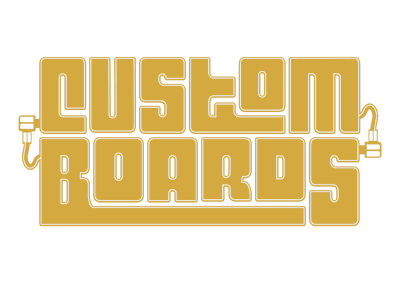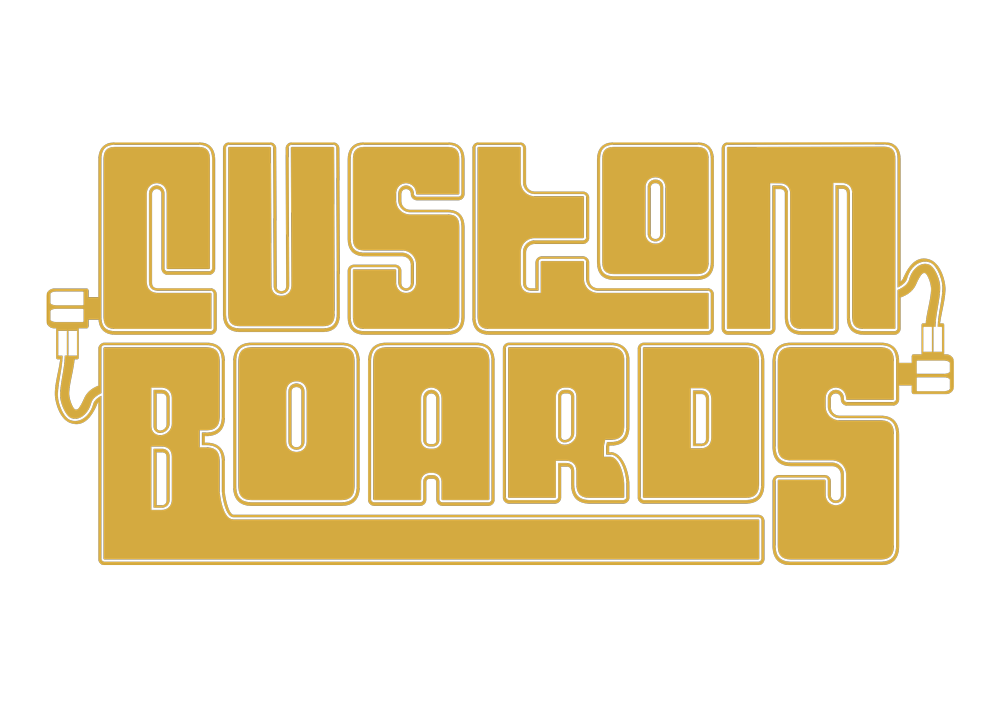The wah-wah does it all
May 13, 2015
My first memories of the sound of a wah-wah are already extremely positive. I remember sitting in our settee in the living room, watching TV. The film was a Finnish comedy about a dishevelled man in a holey undershirt. The man’s name was Uuno Turhapuro. The film’s main theme song contained a very funny sounding guitar. It took me a little while, before I found out that the sound must be a wah-wah pedal. [Example starts at 0:02]
Uuno Turhapuro movies were full of funny scenes, with Uuno walking around in the street with his silly walk – a bit like Goofy – an encountering many other hilarious characters. I especially liked it, whenever he would hide his liquor from his wife inside the handles of his ski poles, or when he goofed around in the army, or in Spain, of all places. Uuno was the pinnacle of fun in my childhood. And each time he got into a bind in one of his movies, we would hear those funny sounds again. [Example starts at 0:00]
Back then, most of the crime shows on Finnish television were imported from West Germany, but I also got to watch smudgy VHS-copies of American detective series at my friend’s place. More often than not, a wah-wah guitar would play during car chases. Another application for wahs seemed to be in funky incidental music, heard in the soundtracks of the adult films us boys watched in secret. Blaxploitation movies, too, seemed to rely heavily on the sounds of wah-wah guitars, whenever there was heightened suspense. [Example starts at 0:05]
For a long time the wah was just a fun sound I knew from movies. I had heard claims that you could also imitate a human voice using a wah, but I didn’t understand how this could be possible. The wah I knew sounded different.
In junior high (that’s middle school for you, Brits) I met a guitar playing bloke, who would go on to become my best friend. He taught me how to play drums first, then bass guitar, and finally he showed me how to play guitar. We listened to Rock bands together, and we spent all our breaks playing in our school’s music room. American Hard Rock bands seemed filled with fantastic players, but the first real “bomb” seemed to go off in 1986, when I had just graduated from junior high.
Steve Vai was a black-haired guitar god with a chiselled face, just the right type of hero for an aspiring young guitarist. When we first watched him play this song on the Sky Channel’s Monsters of Rock-programme, something in us shifted permanently. He used a sound that seemed familiar, yet his technique and execution differed from what I had head before. [Example starts at 0:08]
We were beside ourselves with rejoicing over our heroes excellence, when my friend’s dad noted laconically, that this all had already been done two decades earlier. He played us a record that would change the way my friend and I looked at a wah-wah for good, even though Steve Vai’s saturated guitar sound seemed much more exciting to us. The sound off my friend’s dad’s record was dark and slightly out of tune, but nevertheless – or should it say: because of this – it sounded so soulful to us back then. [Example starts at 0:00]
Jimi Hendrix used a Vox wah, which is known for its “human” voicing. The Vox doesn’t offer an awful lot of range, which is why it requires a gentle and measured touch. But in the right hands – or should that be feet – it is a very evocative effect. Being a young buck, back then, Hendrix seemed like music for old farts to me. Steve Vai was just that much flashier.
Talk Box
In that same period we heard a new sound on the radio. It sounded like a much deeper and much stronger wah-wah. We asked my friend’s dad what it was, and, again, he told us that the new sound was actually an old effect. For us, though, this track would become the cornerstone of what a Talk Box should sound like. [Example starts at 0:22]
Originally, the Talk Box was relatively hard to use, because its sound was produced by driving the amplified guitar sound through the player’s mouth – using a plastic tube – and into a PA’s microphone. Only relatively recently effect manufacturers have managed to come up with a solution, which can be installed on a pedalboard, and that doesn’t require its own amp or amp channel. Here’s an example with a Talk Box used more soulfully, very much like a wah-wah. [Example starts at 0:00]
Dunlop and the return of the wah
Big gestures and clear lines, and sometimes even very kitschy uses, defined this younger’s taste. Wahs also didn’t feature in the music of the LA bands that I dug back then. But it wouldn’t be too long, before my ears picked up the music of one guitarist, who would change the world with his playing. His weapon of choice was a Dunlop wah-wah that had a more aggressive sound, when compared to a Vox. Additionally, he would also be much more straightforward in his wah-technique. His playing made me finally grasp the majesty of the treadle, and he showed me how to use it. One of Slash’s biggest achievements – for me at least – is the way that he demystified the wah, putting it back in the spotlight. [Example starts at 4:06]
More and more bands started using the wah, with most bands trying to emulate Guns N’ Roses’ earthy sound. It is quite possible that another US guitarist also took his pointers there: Slash may have started it, but Metallica’s Kirk Hammett definitely took it and ran with it – sometimes even breaking the barriers of good taste. This next example was a game-changer and genre-buster. Rock and Metal haven’t been the same ever since. In many Metal bands the wah-wah had almost been taboo, until this song came out.
The wah was originally seen as “too Rock”, but now one of the biggest names in Metal stepped on his wah like a madman. He used his wah on almost all of his solos on this album. [Example starts at 2:40]
There might have been a desire on Kirk’s side to use the wah to cover up some technical shortcomings, back then. He had a tendency to pull bend slightly sharp, as well as being slightly sloppy with his picking technique. In the end, though, his playing started a wildfire, and Dunlop’s wahs sold like hotcakes all around the world. This sound became the norm for the next ten years in Heavy Metal, but not for me.
I started tiring of Metallica’s music after the Black Album. Yes, the record had its moments, but the band’s music seemed to have lost a lot of its momentum. I also reached saturation point in terms of wah-sounds, when the next album was released. I started drifting away from things hard and heavy. I was ready for something new.
Auto-wah
My old taste for funky “car chase music” started to rear its head again. My friend handed over his Walkman’s headphones to me, and then put on the new record by the Red Hot Chili Peppers. There was that good old wacka-wacka, but with a more soulful gleam. The coolest thing was, that the bass was using it heavily, too. Listen to what happens in the middle of the first verse. [The wah-wah starts at 0:00, and the auto-wah at 0:25]
John Frusciante and Flea became my new idols. Now I know that producer Rick Rubin, who’s work I had already admired on Glenn Danzig’s records, was the man behind this new work of wonder. He was into earthy sounds. He liked his guitars dry and in-your-face, which was a very refreshing contrast to the highly reverberated sounds that were en vogue back then. This was what I wanted to sound like.
The heavy-handed effect on Flea’s bass track wasn’t really a new invention, even though now it was driven through a distortion pedal. It was first heard in the Seventies, and my research told me that what I was hearing was called an envelope follower, also known as an envelope filter or an auto-wah. The effect sounded very much like a wah-wah, but the pedal didn’t feature a treadle. The effect was triggered by how hard you plucked the strings. Playing quietly would give you bubbly “underwater” sounds, while hard picking would result in sharp tones, just like the toes down position on a wah-wah.
A bass guitar offers a wider dynamic range than an electric guitar. An auto-wah has no problems with low frequencies or fat strings, which is why it became a go-to effect for many bassists. Flea’s inspiration came from his own bass heroes from the Seventies. The father of all things Funk Bass was to become one of my greatest heroes, Bootsy Collins. Listen to this! [Example starts at 0:04]
This guy wasn’t messing about. Bootsy Collins runs his bass’ pickups through separate pedalboards and into separate bass amps. He plays a star-shaped bass and uses star-shaped sunglasses to go along with his over-the-top fashion sense. Bootsy has always named Jimi Hendrix as his biggest musical influence. As he had started on guitar, it wasn’t alien to him to also play his bass in higher registers, and to use plenty of effects. [Example starts at 4:08]
Bootsy also was open to other influences. One of his contemporaries was Stevie Wonder, who has always excelled in soulful music. Wonder, too, would use auto-wahs and talk boxes, but his main instrument in the Seventies was the Hohner Clavinet, an electromechanical keyboard that sounds a lot like a bass or an electric guitar. This track is a few years older than Bootsy’s solo debut. [Example starts at 0:00]
Funk is a distinctly extrovert genre that’s packed with eroticism. So called “pornofunk sessions” were a regular occurrence in my small flat at the start of the Nineties. The porn movies would be running nonstop and the Funk was pumping. We even managed to get a chance at compiling the soundtrack for one of the porn movies of a well-known Finnish director. A friend of mine, a DJ, used the most obscure cuts from his collection of Funk records to fuel our – seemingly – never-ending grave for this music style. You can hear some auto-wah type sounds on this record, too. [Example starts at 0:45]
The Funk scene in Helsinki was in full bloom. Wahs and auto-wahs were often playing simultaneously, used on different instruments. Both effects seemed more popular than ever. Back then I bought – what I thought was a very expensive – Mu-Tron III pedal, that was an updated edition of the auto-wah of Bootsy’s choice. Additionally, I was also running a couple of regular wah-wahs, which meant my four-track recorder was never short of “wacka-wacka”.
The wah-wah in other styles of music
I also listened to relaxing music in my one-room flat. The wah seemed to be every where. Broadly speaking, in Reggae the whole rhythm section of most bands was built on very similar sounds to those heard in Funk and Soul. The bass was mostly left dry, but there was often a wah-wah, or an auto-wah, used on a Clavinet, no doubt inspired by Stevie Wonder. [Example starts at 0:15]
And then there was a very special band, whose name was on everybody’s lips – Kingston Wall. I had been part of their scene right from the start. Psychedelic Prog made a huge comeback after spending the Eighties in the desert. Wah pedals were partnered with a whole slew of different effect pedals, and this trio from Helsinki was at the forefront of the movement. Here’s a beautiful example off of Kingston Wall’s first album’s first track. [Example starts at 2:54]
There also seemed to be new life in the Metal scene, after the wah-overkill wreaked by Kirk Hammett. Many bands started looking for new directions in the latter half of the Nineties, and I started to renew my interest in that type of music. Funk had started to seem very repetitive to me, but, on the other hand, some of the band’s I had the pleasure to experience at Roskilde Festival sounded very fresh and exciting to me. Many of my friends were part of the skater crowd and they were listening to both Rap and Metal. The term crossover is already something of a cliché, but to my mind it found its truest meaning in the music of this band. [Example starts at 0:23]
Tom Morello plugged his wah into his amp’s effects loop, creating a whole new sonic palette in one fell swoop. He managed to produce industrial machine-type sounds with his electric guitar, which in turn inspired a whole host of other bands. With Rage Against The Machine running nonstop on my CD-player I also took another look back on music’s timeline.
I found my true “musical self” at around the same time. Old-school, 1970s Heavy Metal, which I had loved so much during high school, started to rise from the ashes in the wake of Grunge. New bands seemed to spring up by the week, and they used Black Sabbath as their musical compass. Black Sabbath’s Geezer Butler was an early user of filtered bass sounds. His playing suddenly made a connection with the music I was playing back then, and I fell in love forever with the genre – and especially with this track off of one of their earliest albums. [Example starts at 0:00]
I spent what was left of the 90s listening to Sabbath and similar minor pentatonic-leaning bands. The media coined the term Stoner Rock to describe this new breed Heavy, based on the fact that the music was partly used as a soundtrack while smoking “Jazz cigarettes” or experimenting with mushrooms. In Stoner Rock many guitar solos are spiced up with judicious use of wah pedals. And because Geezer Butler was such an icon to many of the genre’s bassists, they, too, opted for wah-wahs and auto-wahs to spruce up their riffs. The sounds from Seventies’ Funk and Reggae had become soaked up in this new genre. [Example starts at 0:09]
A new name started stirring up Helsinki’s music scene, it was a band with strong Black Sabbath influences. HIM took Stoner Rock and transmogrified it into their own style. To many HIM’s songs sound very poppy, but if you listen closely to the guitar sounds, you will find a very authentic take on Tony Iommi’s guitar style. [Example starts at 6:56]
The fabulous triumvirate of a Gibson SG, a Dunlop Bass Wah [sic!] and a Laney amplifier took no prisoners. Mikko “Linde” Lindström’s way of using a wah-wah became his signature sound. Instead of being all over the shop, like Kirk Hammett, Linde used his pedal with a lot of taste and more like an adjustable filter. Linde tended to step on his wah, and then keep the treadle on “toes down”. The filter’s Q-value was set, so that his wah helped his lead lines cut through the mix.
Like virtually all phenomena in my life, Stoner Rock, too, started losing its fascination after a while. Still, I took away from that period the genre’s basic character, namely classic and concise riffs and a tonality anchored strongly in minor pentatonics. Luckily, most of the genre’s best players went on to make great music in their following ventures, too. At the beginning of the Noughties, this band was one of my special favourites. [Example starts at 0:00]
This track features a Morley Vintage Wah with an integrated distortion circuit. Sadly, this type of effect is rather rare, and even new Morleys don’t seem to live up to this standard.
EQs and filters
Josh Homme and Alain Johannes came up with some fantastic sounds on the The Crooked Vultures album. In addition to wah-wahs, they employ filters and EQ pedals to boost the frequencies in their vintage amps, which fit each song the best.
Thanks to this record I started seeing equalisation in a whole new light. Using an EQ or a parametric filter makes it possible to boost a solo, or to attenuate unwanted frequencies to make certain guitar parts slot into their own frequency band, like in the following example. The rhythm guitar features some juicy filtering, making it cut through the mix with ease. [Example starts at 0:00]
Back when the electric guitar was born, it sound was rather boring. It was brass players who got all the women. The wah-wah was first conceived as an electric counterpart to the harmon mutes used mainly in trumpets. The inventors thought that the new device sounded like the trumpet player Clyde McCoy, which is how the man’s name ended up on the first wah pedal. The company rang up Clyde, and offered him 500 dollars for his permission to use his name on the new device, and he said yes. [Example starts at 0:00]
As I’m writing this piece, wah-wahs, auto-wahs and filters are more popular than ever before. All of these effects are in regular use in many different musical genres. Vox’ “gentleman’s sound” and the aggressive tones of Dunlop wahs both have their place in the modern musician’s tool kit. A fine, and more recent, example of wah-wah-playing outside the Rock genre, is this track by Finnish guitarist Rane Raitsikka. [Example starts at 0:10]
The guitar has to reinvent itself constantly, in order to stay relevant to young people. Rantsikka’s band Atomirotta seems to carry the flag for fresh guitar sounds, here in Finland. The youth needs their own set of musical role models and guitar heroes, mine are now “old farts”, for the most part. The music that lies close to my heart sounds as boring to the young people of today, as the dusty old records my teenage friend’s father played to us, so long ago. And back then the “old fart” was none other than Jimi Hendrix.
13.5.2015 Kimmo Aroluoma
The writer is the owner of Custom Boards Finland. He is a veteran guitar tech who has toured for years with Finnish bands HIM, Amorphis, Michael Monroe, The Rasmus and Von Hertzen Brothers. Today he designs pedalboards and runs his own web shop in Helsinki, Finland.
*****
Custom Boards has had the honour of helping hundreds of musicians with their effects setups, from all possible genres. Creative Sound Consultation 101 - service is meant for anybody who wants to improve his or her guitar sound. After consulting with us you will understand much better how the different parts making up your signal path influence your tone.
BOOK YOUR CREATIVE SOUND CONSULTATION 101 -SESSION
Also in Custom Boards Blog
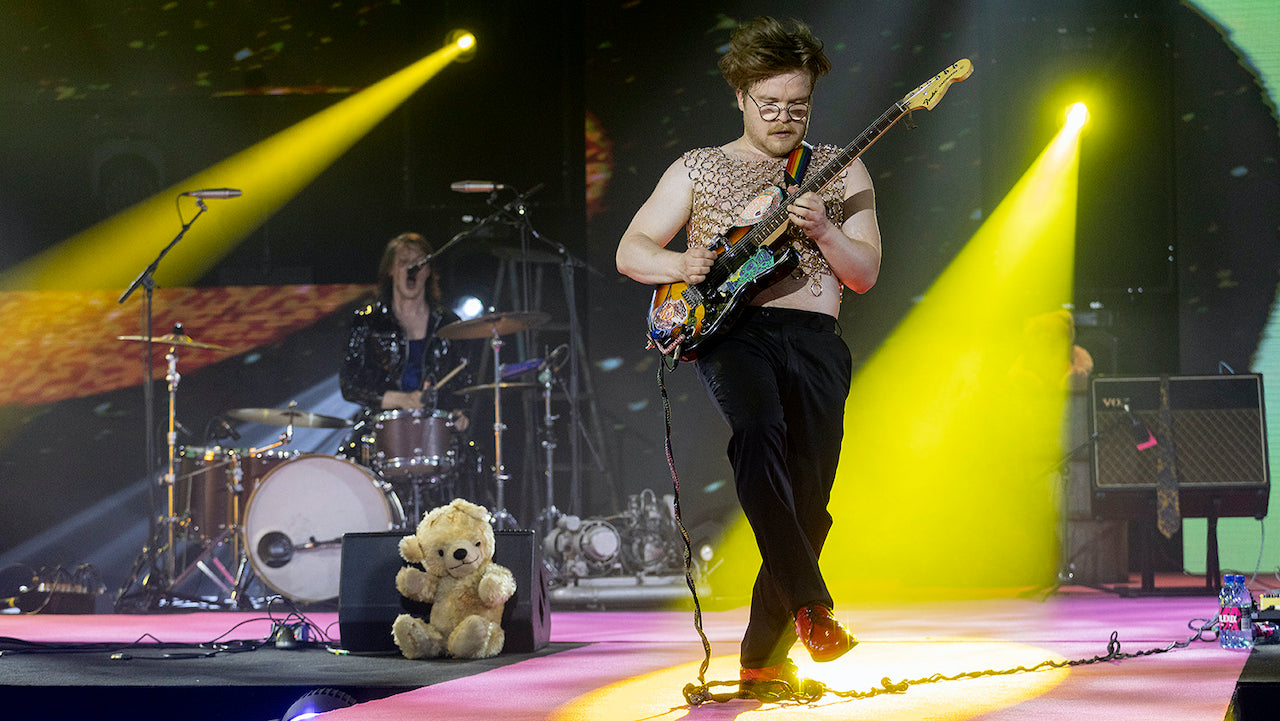
Ursus Factory and the Sixth Generation of Guitar Rock
June 10, 2021
I've been noticing clear signs of me turning into an “old fart” over the last few years. It’s only a few short months before I will turn 50, and it seems ever harder beam myself back into my 30-year old “hippy” state of mind. Am I – is Custom Boards – still a relevant player in the eyes of the new wave?
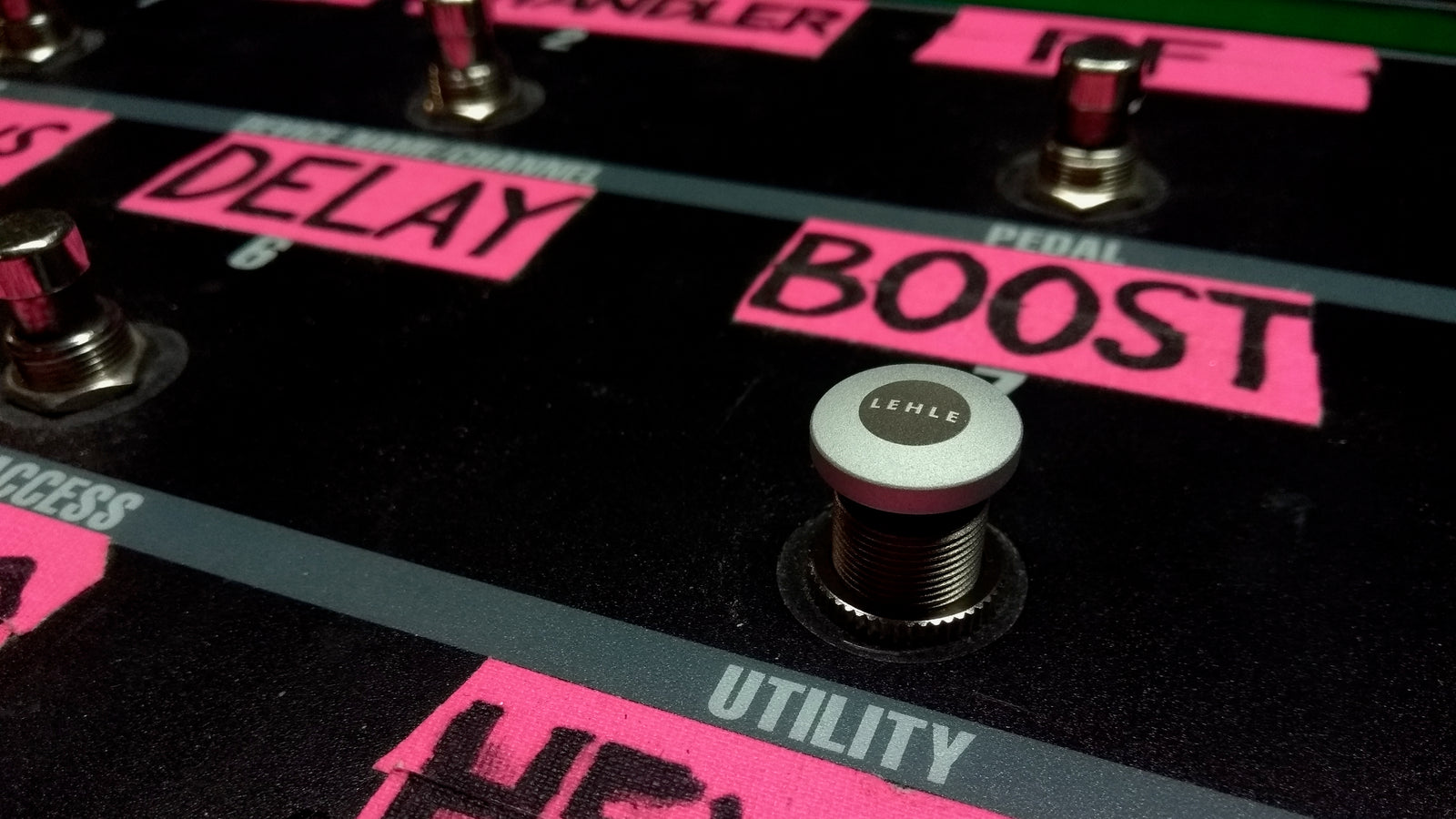
Revolutionizing the market - Lehle Components
May 09, 2020
German engineer Burkhard Lehle unveiled his plans for the Lehle Components a few years ago at 2014’s NAMM Show. He would release his own line of audio components, which will include brand-new designs alongside his older inventions.
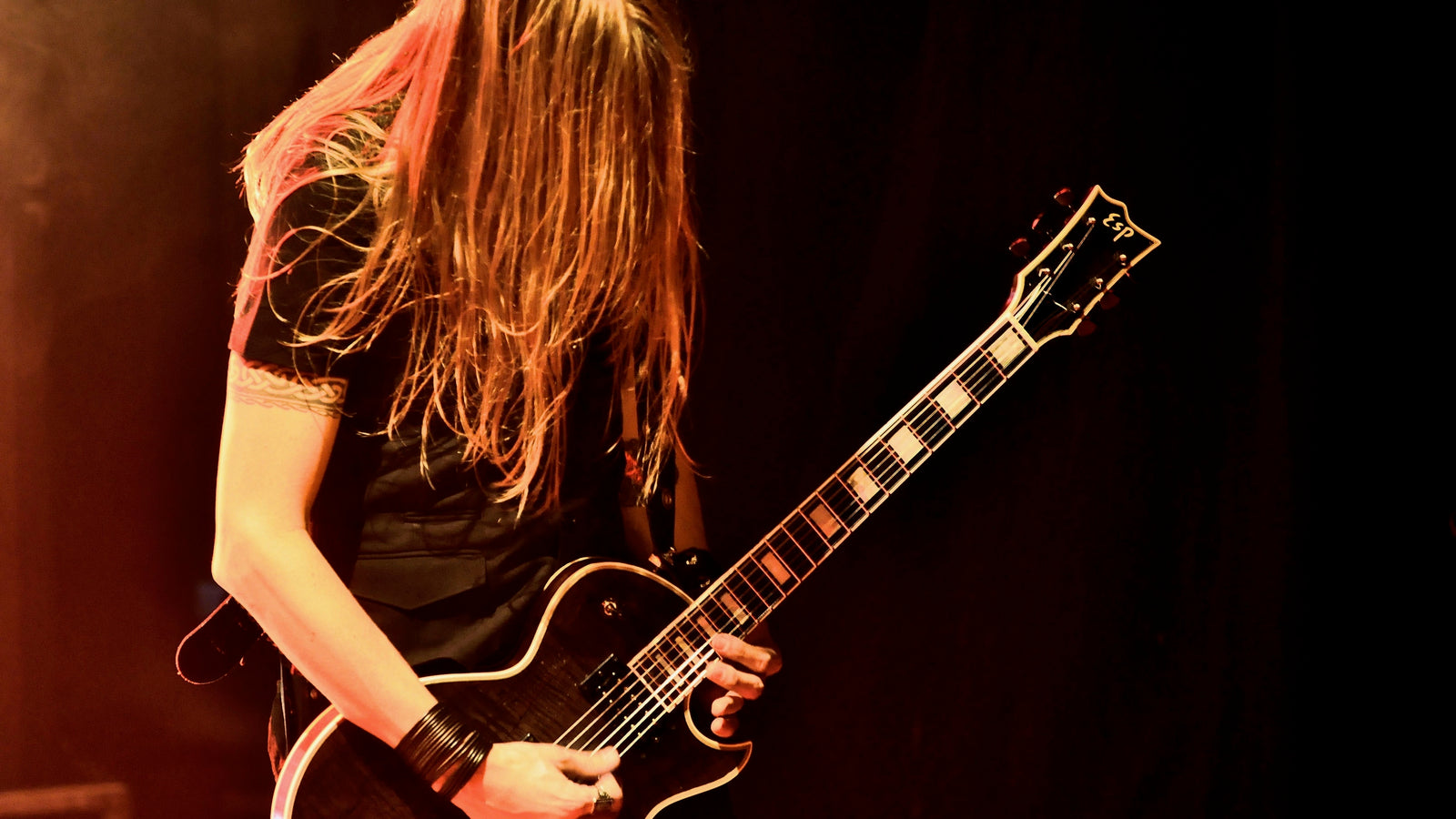
Unforgettable Gigs – Part 1: Amorphis in the Balkans
April 27, 2020
Amorphis’ manager, Jouni Markkanen told me to be extremely careful, and made me clear that I had to have the gig fee in my hands, in cash, before allowing the band to leave their hotel for the venue.
